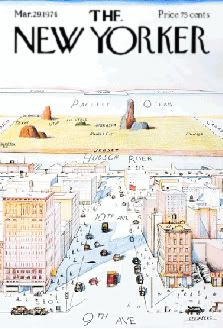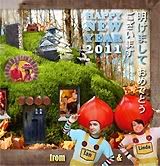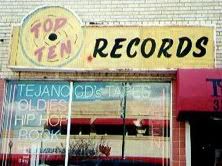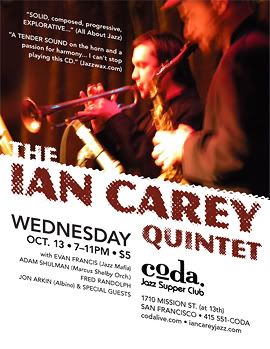Hi folks, hope everything's well and good, and the gigs are as plentiful as copies of "The Da Vinci Code" in a thrift store. Things have been light in that area for me since the unfortunate closing of Coda--though of course the hunt is on for greener pastures on which to do our jazz grazing--but I've been hard at work on writing new music for the group, hitting local jam sessions, plus some good old-fashioned woodshedding. I've also got an exciting recording session coming up with Rob Reich and his fabulous Circus Bella All-Star Band (which could use some support--please chip in a few bucks if you can).In the meantime, some good news--Cadence Magazine, a great in-depth independent quarterly which has been keeping the jazz journalism flame burning since 1976, reviewed my album Contextualizin' in its new issue, and had some really gratifying things to say. Here's the whole review--if you like it, I encourage you to support the magazine and subscribe.
Trumpeter Ian Carey interprets his own compositions (with one exception) on his second album, Contextualizin’, with straightforward melodic lyricism—deceptively straightforward, in fact. The modesty he presents in the liner notes he wrote coyly invites protest. Carey wonders in written form how he would ever be able to make his performances stand out among all of the Jazz trumpeters who exhibit blazing technique in an exclamatory voice. Well, Carey’s voice is declarative in a “discursive” (Steve Lacy’s word) way that draws in the listener with warmth and wordless narrative logic. Carey’s stories suggest one-on-one familiarity, as if he were imparting new information to a friend. As for influences, Carey makes plain that he has an affinity for the cooler trumpeters like Miles Davis or Tom Harrell, instead of those who fearsomely brandish technique for exhilarating effect. In fact, the first track on Contextualizin’ is named “Tom/Tom” after Harrell and trumpeter Tom Peron who likewise value linear improvisational movement throughout a performance while staying mostly in the middle range of the instrument. Carey’s composition is engaging, with prodding anticipations of the beat and vertiginous intervals involving harmonic interplay with saxophonist Francis. Carey realizes that listeners can be drawn into a performance, as well as being startled to pay attention to it. Without so much as merely raising his voice, so to speak, Carey continues through all eight of his compositions to establish moods, varied according to the thematic material at hand, and “discursively” explores them. “Questions,” which follows “Tom/Tom,” involves minor-key suggestions of mysterious forces as the quintet remains subdued and almost hushed until the soloists smolder without the occurrence of actual explosion despite Carey’s intensification of feeling and Francis’ darting and sweeping outlines over the modal basis. Keyboardist Shulman changes the background texture on some of the tracks by switching to Fender Rhodes, even as the horns remain at the forefront of improvisational activity. Although Carey has studied and performed in widely separated cities in the United States, including New York, Reno and Binghamton, his recording career commenced after he moved to San Francisco in 2001. Contextualizin’ is one more result—an opportunity to showcase “discursively” not only Carey’s distinctive style, but also his varied compositional talent. Like most other Jazz musicians, Carey plays standards too. On this album, that standard is “Just Friends,” which in beboppish fashion, Carey’s group transforms into another song based on the same chord structure. The quintet performs “Just Friends” contrapuntally somewhat like Gerry Mulligan and Paul Desmond’s work on Two of a Mind, except for Shulman’s pointillistic adherence to the melody. Carey’s burnished, technically precise cadenza at the beginning of “Disinvited” suggests infinite possibilities for continuation but few hints of the stop-and-start, teasing melody to follow, subject to the whimsical modification by each of the musicians. Carey intentionally apostrophized the title of his album to invite comfort with his music which attracts listeners to its content. Even so, Carey doesn’t sacrifice technique or depth of thought for his intimations of informality. --Bill Donaldson


 Over at
Over at 
 It's that time of year when people start cranking out Top 10 lists like fruitcake, so I thought I'd toss my cake in the ring and do one myself.But since I usually come across new albums via used record stores and word of mouth, I decided my list would be not necessarily the best albums which came out in '10, but the best albums that showed up on my radar for the first time this year (hence "New to Me"). Some of them are actually new! (But most aren't.) Hopefully some of them will be new to you, too.So now, in no particular order, here are ten albums which made my year:David Smith Quintet -
It's that time of year when people start cranking out Top 10 lists like fruitcake, so I thought I'd toss my cake in the ring and do one myself.But since I usually come across new albums via used record stores and word of mouth, I decided my list would be not necessarily the best albums which came out in '10, but the best albums that showed up on my radar for the first time this year (hence "New to Me"). Some of them are actually new! (But most aren't.) Hopefully some of them will be new to you, too.So now, in no particular order, here are ten albums which made my year:David Smith Quintet - 
 Hi listeners--I'm really happy to announce a show for the Quintet coming up this Saturday at one of my favorite local venues,
Hi listeners--I'm really happy to announce a show for the Quintet coming up this Saturday at one of my favorite local venues,